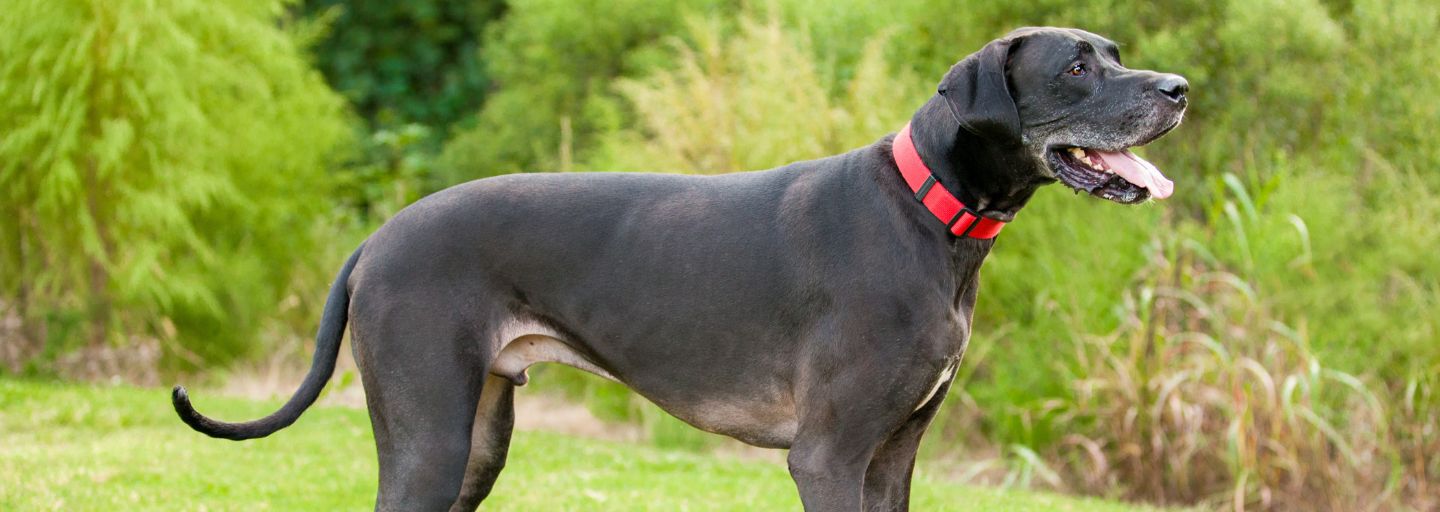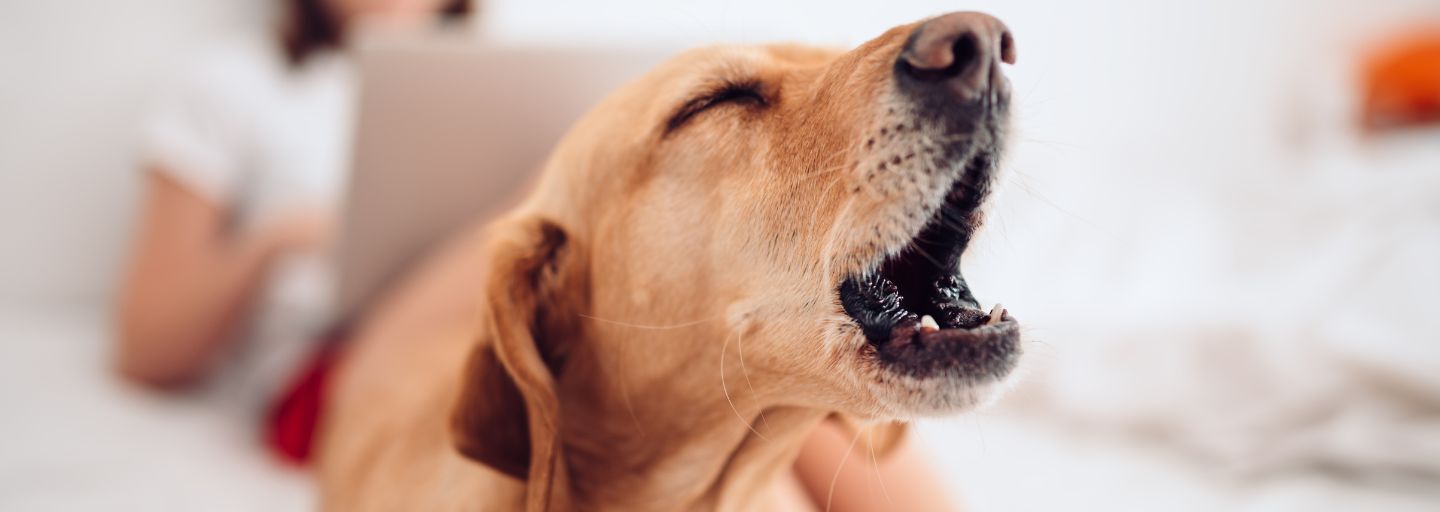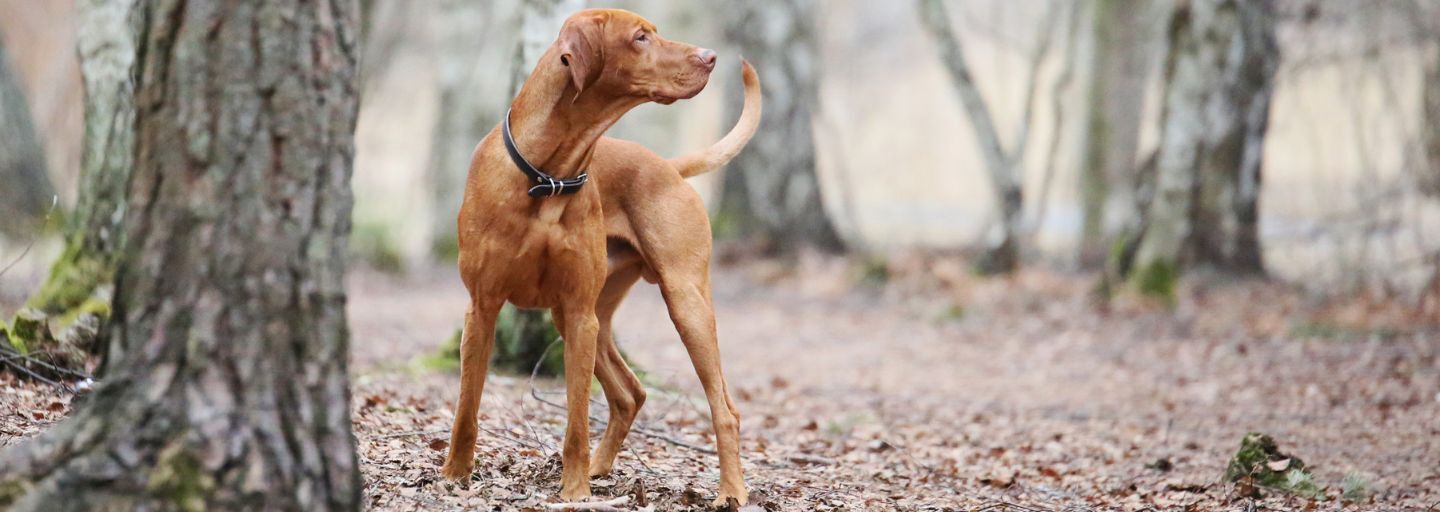Bigger may be better, but when it comes to feeding larger dogs, less can often mean more – in nutritional terms, at least.
Balancing act
Big dogs have big appetites, but they also have slower metabolisms than their smaller cousins, so they require fewer calories and less fat from their food to maintain a healthy, lean body condition.
At the same time, bigger breeds need to develop and support a large, strong skeletal system and powerful joints, which means an additional requirement for minerals like calcium and phosphorus. SUPERCOAT Large Breed with Real Chicken provides an appropriate protein-to-fat ratio that helps maintain lean body mass. It is also formulated with natural glucosamine that helps keep joints healthy and mobile, as well as the added Calcium that promotes strong bone development. It's particularly important not to over-feed large and giant dog breeds, not just because of the usual health problems that result for all dogs, but also because if their weight surpasses the ability for their frame to support it, there's a real risk of deformities, especially during their youth.
Specially prepared large-breed formulas have larger, more satisfying kibbles to encourage big dogs to chew for longer, slowing the rate of eating and helping them get the most out of their food – as well as reducing the temptation to over-feed. Reduced fat content takes into account their slower metabolism and helps control weight gain and minimize the impact on joints and other vital organs. Nutrients associated with the synthesis and repair of the joints are in good supply. PRO PLAN Large Adult with OPTILIFE contains specific nutrients balanced at optimum levels that will help keep them in good condition. Formulated for large dogs, OPTILIFE ensures your dog absorbs all the key elements of its food, as well as looking after its teeth and joints.
Lower calorie levels in large breed foods can help control the tendency. But if weight is a growing concern, consider trying a specially formulated 'light' dog food product, lower in fat while still containing all the necessary vitamins and minerals, ensuring a balanced diet despite reduced calorie intake. PRO PLAN WEIGHT MANAGEMENT FORMULA contains 26% protein and 9% fat to help maintain an ideal weight and body condition and natural prebiotic fiber, sourced from wheat bran that promotes digestive health.
Best dog food for large breeds
Several leading Purina brands offer formulas specifically developed to meet the needs of large and giant-breed dogs, each the result of the very latest scientific advances in quality, taste, and nutrition. Click any brand link below to learn more.
SUPERCOAT Adult Large Breed
PRO PLAN Adult Large Breed
Large dog feeding checklist
Feed your larger adult dog once or twice a day, although seniors may prefer smaller portions more frequently, especially if you serve canned food. Large dogs have a tendency to bolt their food without chewing properly, which can lead to problems in the gut. Smaller portion sizes can help reduce the urge.
- Serve dog food at room temperature to ensure your dog can taste and smell it properly. If you are feeding canned food, warming up an opened can may take up to two hours once it’s been taken out of the fridge. Alternatively, you might consider microwaving wet foods (out of the can) for a short time. But avoid serving dog food that is either too hot or too cold.
- If feeding dry complete dog food, store it in a dry, clean environment. Re-sealable packaging or an airtight container keeps it tasty by sealing in the aroma.
- Your dog should be fed in a quiet place away from interruptions and away from where you eat. It's always a good idea to feed on a surface that is easily cleaned, like a tiled floor or a mat. Large breeds, susceptible to arthritis in old age, may find it hard to lean down and will benefit from a bowl placed at head height.
- Don't allow children to interrupt your dog when it is eating, or they may mistake them as a 'predator' trying to steal their dog food and react aggressively. If you have more than one dog, feed them separately to avoid bullying or fighting.
- Try not to feed your dog immediately before or after exercise. Many dogs are susceptible to a twisting of the gut and blocking of the stomach, which requires immediate veterinary attention. About an hour's grace either side is advisable.
How much to feed a large breed dog?
Follow the feeding guide on the back of the pack.
Note: that adult large breed products have lower feeding recommendations, but remember, the guide is only there to give you an idea. Every large breed dog is an individual, so the most important consideration is to feed enough to maintain a lean, healthy condition. Always provide a bowl of fresh drinking water.
Weight concerns
Obesity is a common nutritional disorder in all large dogs and needs to be monitored carefully. Overweight dogs are more likely to develop diabetes, heart and respiratory problems, and arthritis.
Lower calorie levels in large breed foods can help control the tendency. But if weight is a growing concern, consider trying a specially formulated 'light' dog food product, lower in fat while still containing all the necessary vitamins and minerals, ensuring a balanced diet despite reduced calorie intake.



